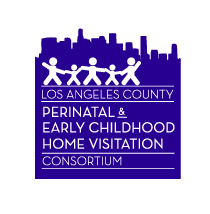Understanding Proposition 1: A Closer Look at California's Mental Health & Homelessness Measure
On March 5th, Californians will vote on Proposition 1, a measure aimed at addressing homelessness and restructuring our state’s mental health services. Understanding its impact and advocacy efforts are crucial steps as we consider its potential effects on our communities.
What is Proposition 1?
Proposition 1 aims to combat homelessness by reallocating resources from the Mental Health Services Act (MHSA) towards behavioral health services and housing interventions. This two-part measure would restructure the MHSA and authorize a $6.3 billion bond to fund behavioral health treatment and housing facilities.
Understanding the Mental Health Services Act (MHSA)
Understanding the current Mental Health Services Act (MHSA) is integral to comprehending how Proposition 1 might impact mental health programs and services statewide. The MHSA, originally Prop 63, was enacted in 2004 and has played a crucial role in funding mental health programs across California with funds from a 1% tax on personal incomes over $1 million. When it was created, it had 5 main goals: community services and supports, prevention and early intervention, innovation, capital facilities and technological needs, and workforce education and training. It was designed to improve mental health outcomes by providing resources for prevention and support services. The MHSA emphasizes community involvement, cultural awareness, and accountability to ensure that mental health services reach all who need them, especially underserved populations.
Changes to the MHSA Proposed by Prop 1
If passed, Prop 1 would bring significant changes to California's mental health system. It would shift focus to behavioral health, expanding services for substance use disorders, and modify how funds are allocated. It’s important to note that Prop 1 would change funding allocations without increased revenue.
The MHSA would become the Behavioral Health Services Act (BHSA)
It would increase the state's share of Prop 63 funds from 5% to 10%, so counties would receive 90% of the total fund. It would also revise the allocation of those state level funds.
Reallocation of county funds:
30% for behavioral health services and supports
Includes early intervention, outreach and engagement, workforce education, outreach and engagement, workforce education and training, capital facilities, technological needs, and innovative pilots and projects
35% for full-service partnership programs
Comprehensive and intensive care models for people at any age with the most complex needs, also known as the “whatever it takes” model
30% for housing interventions
Housing for children and families, youth, adults and other adults living with serious mental illness/serious emotional disturbance and/or substance use disorder. This can include rental subsidies, operating subsidies, family housing and/or shared housing. Half of these funds must be spent on housing interventions used for people experiencing chronic homelessness.
Homelessness in California
In 2023, over 254,914 individuals sought help from the homelessness response systems in California. Among them, 34% were families with children, and 9% were young people without guardians. About 36.4% of all young people in California are experiencing homelessness, with 35.2% of them sleeping in places not intended for habitation. And currently, there are only enough beds designated for homeless youth to accommodate 22.8% of them, meaning there is a critical gap in support services.
How will Prop 1 affect Housing in California
Prop 1 would approve $6.4 billion in bonds, which means the state would borrow this money and pay it back over 30 years using funds from the State General Fund. The allocation of this money would be divided, with around 70% going towards building mental health facilities and 30% towards housing. Half of those housing funds would be reserved for veterans, leaving about $1 billion for general housing needs. The state estimates that this allocation could support the construction of 4,360 housing units, 2,350 of which would be for veterans. There are no specific priorities or set-asides for families with children or transition-aged youth in this plan. This is in addition to the 30% of MHSA county funds, totaling around $2 billion, that Proposition 1 would reallocate in MHSA.
Impact on Children and Existing Programs
The impact of Proposition 1 on children's programs is uncertain, both at the statewide and county levels. One critical aspect of Proposition 1 is the reorganization of prevention services, which will now be administered at the state level. While this may help with coordination, it raises concerns about the potential loss of funding for already existing children's programs at the county level. Each county has its own approach to delivering mental health services for children and youth, leading to uncertainty in how the proposition will affect existing programs. With uncertain implications for local programming and staffing, community input and advocacy are going to be important in ensuring equitable services, especially for underserved populations.
Next Steps and Advocacy
Prop 1 represents a significant effort to address homelessness and improve mental health services in California. However, its impact on existing programs, especially those serving children, is currently unknown. It's important for voters to be informed when making their decision. The measure presents both opportunities and challenges, especially for mental health services and housing for children and families. If Prop 1 passes, community advocacy will be instrumental in shaping how counties adapt to these changes and prioritize funding allocations.
Additional Resources:
California Budget & Policy Center- Understanding Proposition 1
CalMatters article- California voters will decide on Newsom’s mental health overhaul. How did we get here?
LAist article- California Proposition 1
LA County Prop 1 Update- Presentation
GV Wire article- Newsom’s Prop 1 Promises to Build & Fund Mental Health Beds. But it Also Raids County Programs.
Informational Webinar on Proposition 1- Presentation
League of Women Voters of California Education Fund article- Proposition 1 measure breakdown
Legislative Analyst’s Office- Analysis of Prop 1
Homelessness Response System- Data
California Youth Homelessness Dashboard- Data

